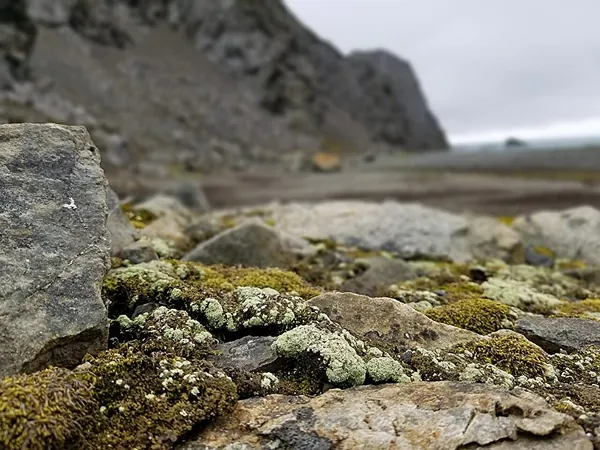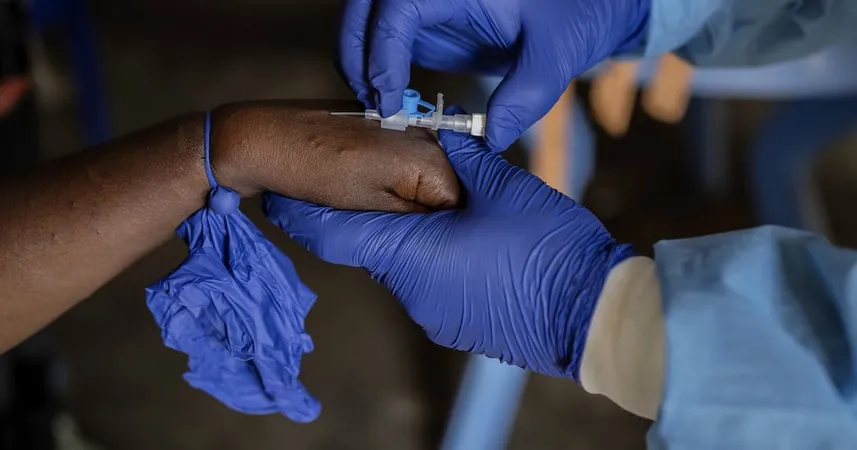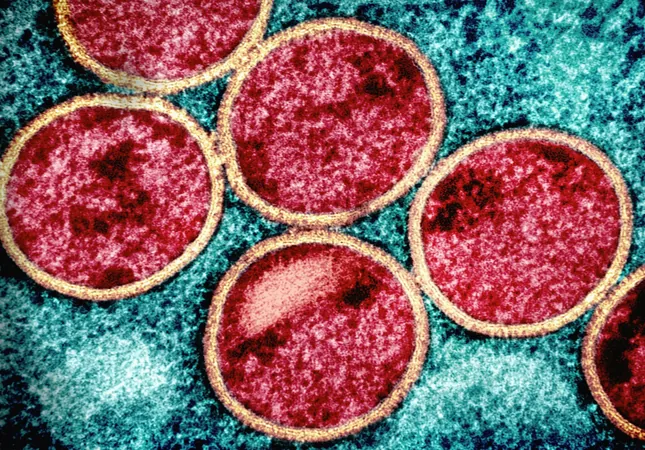
The Astonishing Secret Life of Lichens: Are They Hiding a Wild Sexual Mystery?
2024-11-20
Author: Olivia
Introduction
Have you ever glanced at the delicate patches of lichen on tree trunks or park benches and thought little of them? Think again! These seemingly mundane organisms are not just botanical drifters; they form one of nature's most fascinating partnerships—an intricate collaboration between fungi and photosynthetic algae or bacteria. In a groundbreaking new study published in the journal BMC Genomics, researchers have unearthed something astonishing about a particular type of lichen known as Lepraria. For years, scientists believed these lichens were completely asexual, but new genetic evidence suggests that they may actually possess the capability for sexual reproduction.
A Groundbreaking Discovery
Meredith Doellman, a postdoctoral researcher at the Field Museum's Grainger Bioinformatics Center and lead author of the paper, explained, “Lepraria looks like nothing more than a light dusting of gray-green powder on rocks or benches, often mistaken for moss. However, those tiny specks may hold secrets that challenge decades of scientific assumptions.”
For over 200 years, researchers have observed Lepraria and confidently concluded that these lichens never exhibited structures indicative of sexual reproduction. This assumption painted Lepraria as a biological oddity; a genus entire that seemed to lack any form of sexual engagement, unlike many other lichen groups that typically feature both asexual and sexually reproducing species.
The Genetic Evidence
But everything changed. Doellman and her team analyzed DNA from various Lepraria species and compared it to that of their closest relatives, Stereocaulon. To their surprise, the researchers discovered that Lepraria possesses not just remnants but fully functional genes responsible for sexual reproduction, including those needed for the formation of fruiting bodies—structures tasked with spore production.
“I was blown away by the findings,” confessed Felix Grewe, the director of the Grainger Bioinformatics Center and senior author of the paper. “No lichenologist would have suspected that Lepraria has the genes for sex, especially given the lack of observable reproductive structures.”
Unanswered Questions
Despite this genetic revelation, the team still hasn't identified any fruiting bodies in Lepraria. This raises intriguing questions. Are these lichens actually producing reproductive structures that remain unseen, or have they retained these genes for another purpose entirely?
One hypothesis posed by the researchers suggests that Lepraria could be engaging in a form of 'parasexual' reproduction—a process that allows for genetic recombination without following traditional sexual reproductive pathways. The possibility of alternative mating strategies is another area ripe for exploration.
Implications and Importance
The implications of this discovery are immense. Understanding the reproductive strategies of Lepraria could not only shed light on the evolutionary history of lichens but also unravel the deeper complexities of their ecosystems, which are vital for biodiversity and environmental health. With their unique capability to photosynthesize, lichen populations are crucial in many ecosystems, serving as indicators of air quality and contributing to soil formation.
Moreover, the ability to reproduce asexually tends to favor a more stable genetic downturn; if a lichen can disperse and settle with its photosynthetic partner, it maximizes its chances of survival. However, sexual reproduction fosters genetic diversity, which is essential for long-term adaptability to environmental changes.
Conclusion
Researchers emphasize that while the mystery of Lepraria’s potential sex life remains unsettled, it stands as a testament to the hidden wonders of nature. These inconspicuous organisms could unlock new insights into the evolution of symbiotic relations, sexual reproduction, and even the resilience of life in extreme environments.
As scientists continue to investigate the unusual sexual capabilities of Lepraria, one thing is clear: there's much more beneath the surface of these unassuming lichen patches, and our understanding of their world is just beginning to expand. Who knows what surprising revelations await in the fascinating realm of fungi and their photosynthetic partners? The next groundbreaking discovery could be right under our feet, waiting to be uncovered!









 Brasil (PT)
Brasil (PT)
 Canada (EN)
Canada (EN)
 Chile (ES)
Chile (ES)
 España (ES)
España (ES)
 France (FR)
France (FR)
 Hong Kong (EN)
Hong Kong (EN)
 Italia (IT)
Italia (IT)
 日本 (JA)
日本 (JA)
 Magyarország (HU)
Magyarország (HU)
 Norge (NO)
Norge (NO)
 Polska (PL)
Polska (PL)
 Schweiz (DE)
Schweiz (DE)
 Singapore (EN)
Singapore (EN)
 Sverige (SV)
Sverige (SV)
 Suomi (FI)
Suomi (FI)
 Türkiye (TR)
Türkiye (TR)